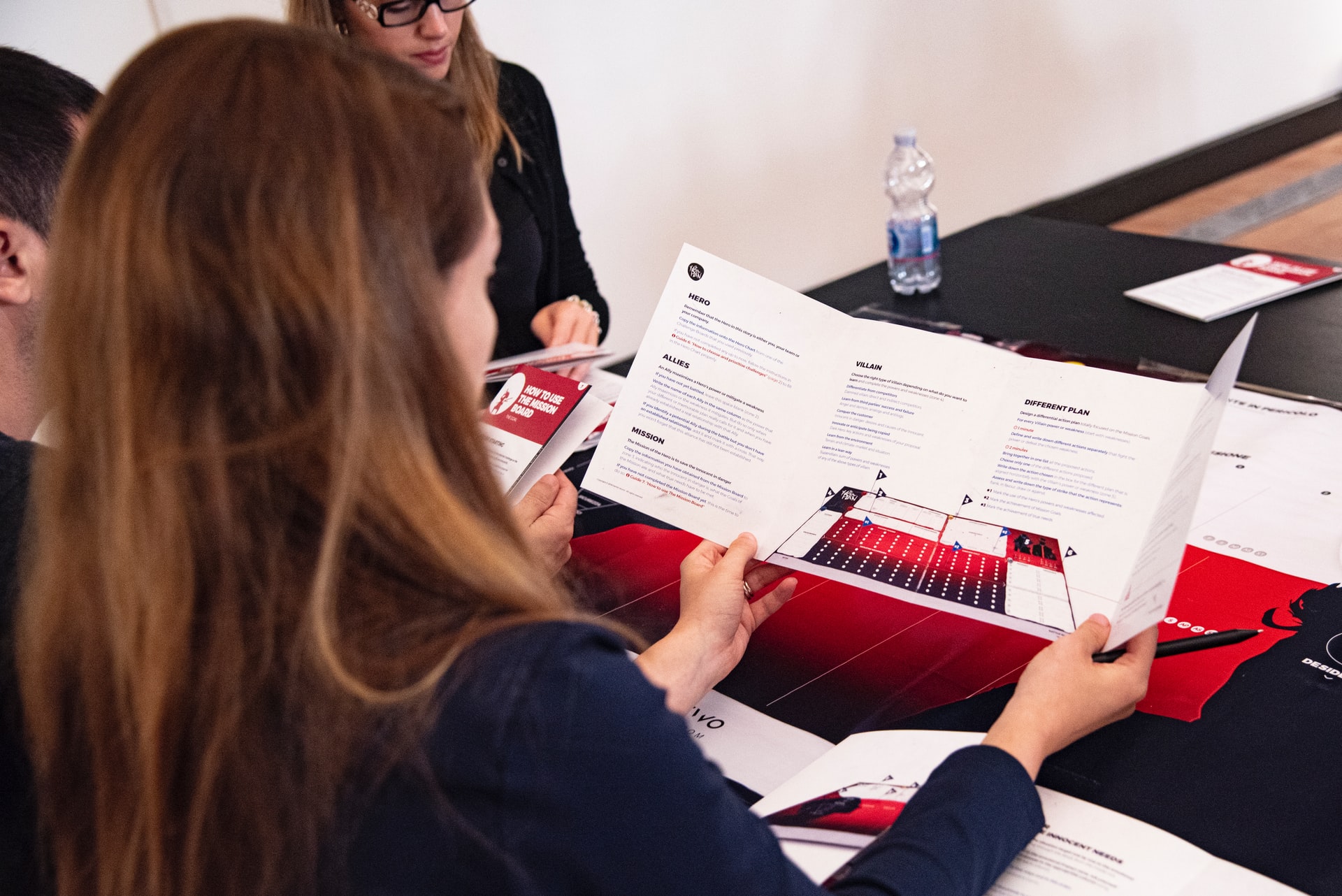
17 Sep 6 Tips for Designing an Effective Sales Brochure
With an organized, attractive, easy-to-read design, a simple brochure is an effective way to spread information about your product, service, or business. However, the design of your brochure has a big influence on whether or not someone chooses to read your content. Mousegraphics has over thirty years of experience in the printing industry, so we know all the elements of a good brochure design. Continue reading to find out our top tips for designing a brochure that will successfully convert customers.
How to Design a Compelling Sales Brochure
1. Design an Engaging Cover
People always judge a brochure by its cover! Handing out brochures or leaving a stack at your tradeshow booth isn’t enough to make someone take the time to read your content. One of the most important elements of a good brochure design is an eye-catching, interesting cover.
Design a brochure cover that encourages the recipient to open it up by including:
- A large, brief headline that clearly tells the reader what to expect from the brochure.
- An image that is sharp, captivating, and relevant to your content.
- Your business’s name and logo so the reader knows who the information comes from.
2. Organize Your Information
The way that your brochure folds up affects how it will present information. Decide how your brochure will be folded, then lay out all of your graphics, text, and other content so that it flows in the same order that a person opens and reads it.
Avoid overcrowding your brochure with big blocks of text or too many images by organizing your information into separate steps, sections, boxes, and bullet points. Then, distribute your broken-up content across the different pages that the folds in your brochure create.
3. Make It Readable
Organization isn’t the only factor that affects the readability of your brochure. It’s important to choose fonts and colors that make your text easy to read and match your other marketing materials. Always review your text carefully before printing to check for any spelling or grammatical errors and to ensure that the content isn’t too long or too short for the reader.
4. Use High-Quality Images
Photos and graphics can bring your brochure to life and help readers understand your content. Any images you use need to be relevant and should be distributed sparingly. Otherwise, they will only confuse readers. However, if your photos are poor quality in any way, it doesn’t matter how well you use them—make sure that any images you select have a high resolution.
5. Choose Durable Materials
Readers will evaluate the quality of your business based on the quality of your brochure. Thick paper stock and glossy or matte coating creates a more durable, higher-quality brochure. Combining quality materials with organized, easily readable text and sharp images will make your brochure appear more professional and improve your reputation.
6. Include a Call-to-Action
A successful brochure makes the reader want to engage with your business. A call-to-action tells the reader what to do and why they should do it. Encourage your readers to take action by including a statement about promotions, coupons, benefits, or other incentives.
For example, you can tell readers to check out your products or services by visiting your website or calling a certain number. Display your call-to-action in clearly visible text at the bottom of your brochure along with your contact information.
Print Services in Tempe
We hope you find our tips for designing a brochure useful! When you’re ready to print, give us a call. At Mousegraphics print shop in Tempe, Arizona, we produce a variety of affordable, high-quality print marketing materials for businesses in all types of industries. Call (480) 470-7438 today to discuss your printing needs.
Images used under creative commons license – commercial use (9/17/2021). Photo by FORTYTWO on Unsplash



